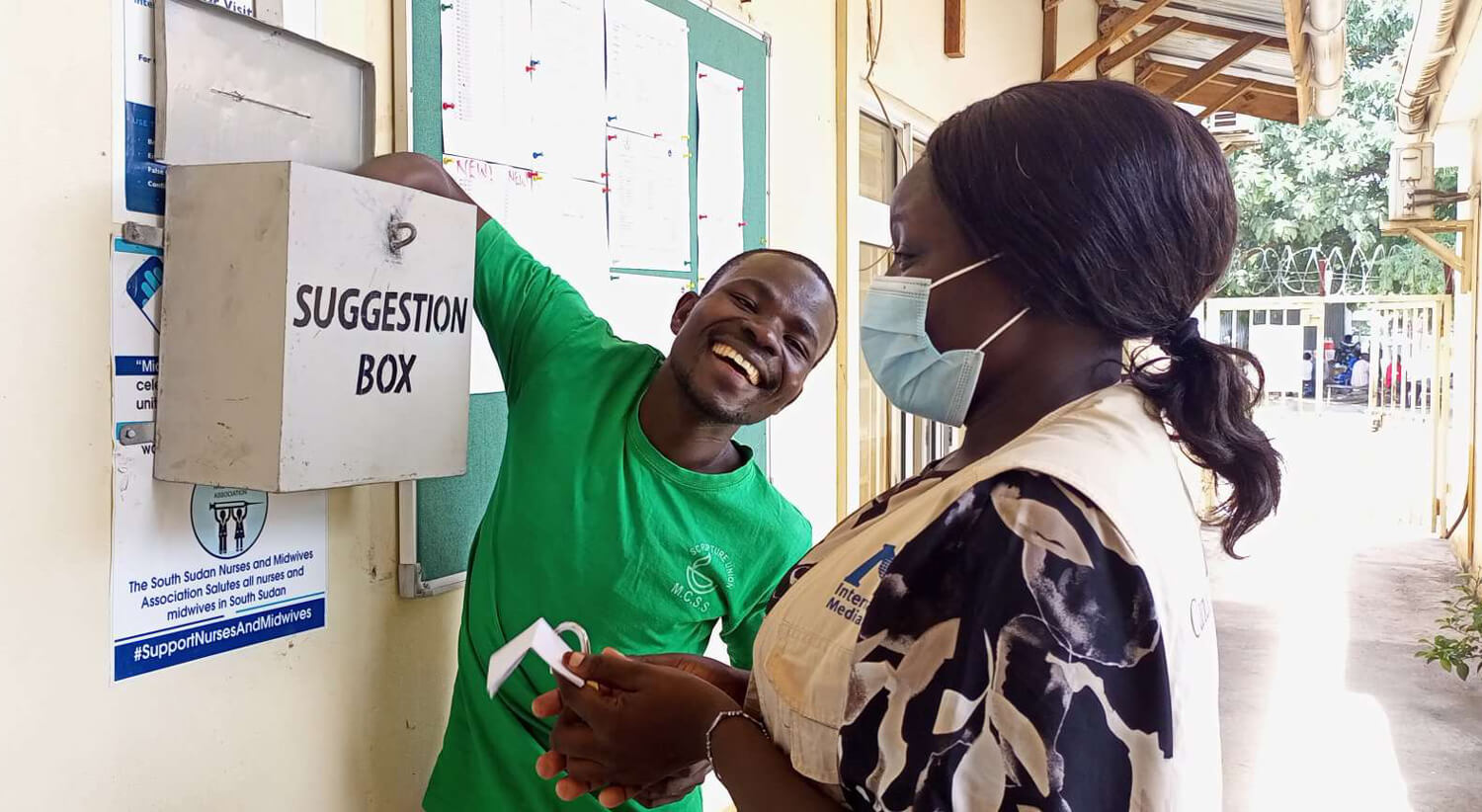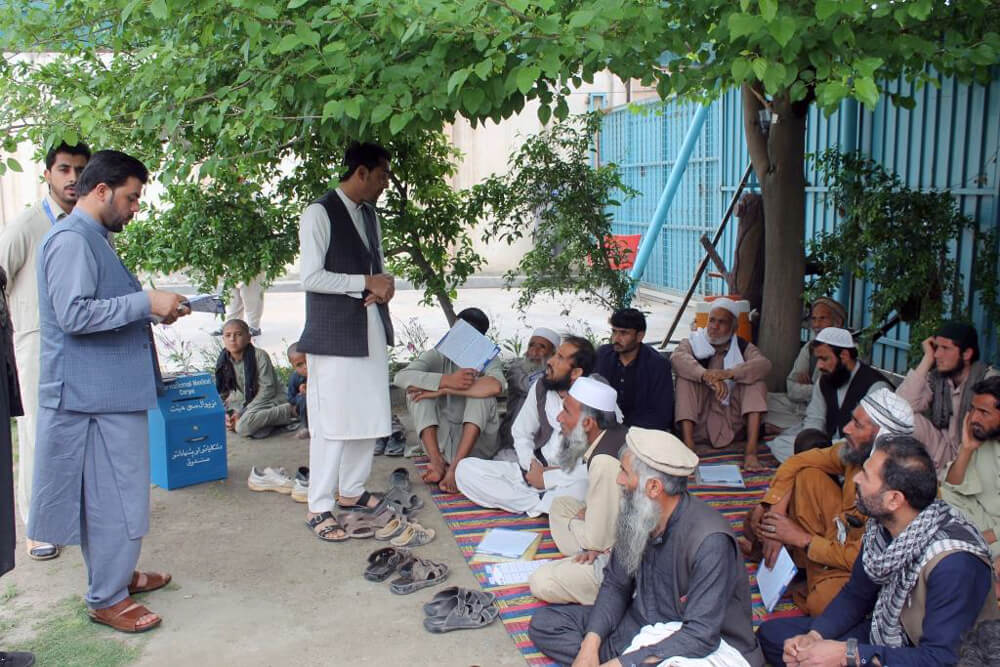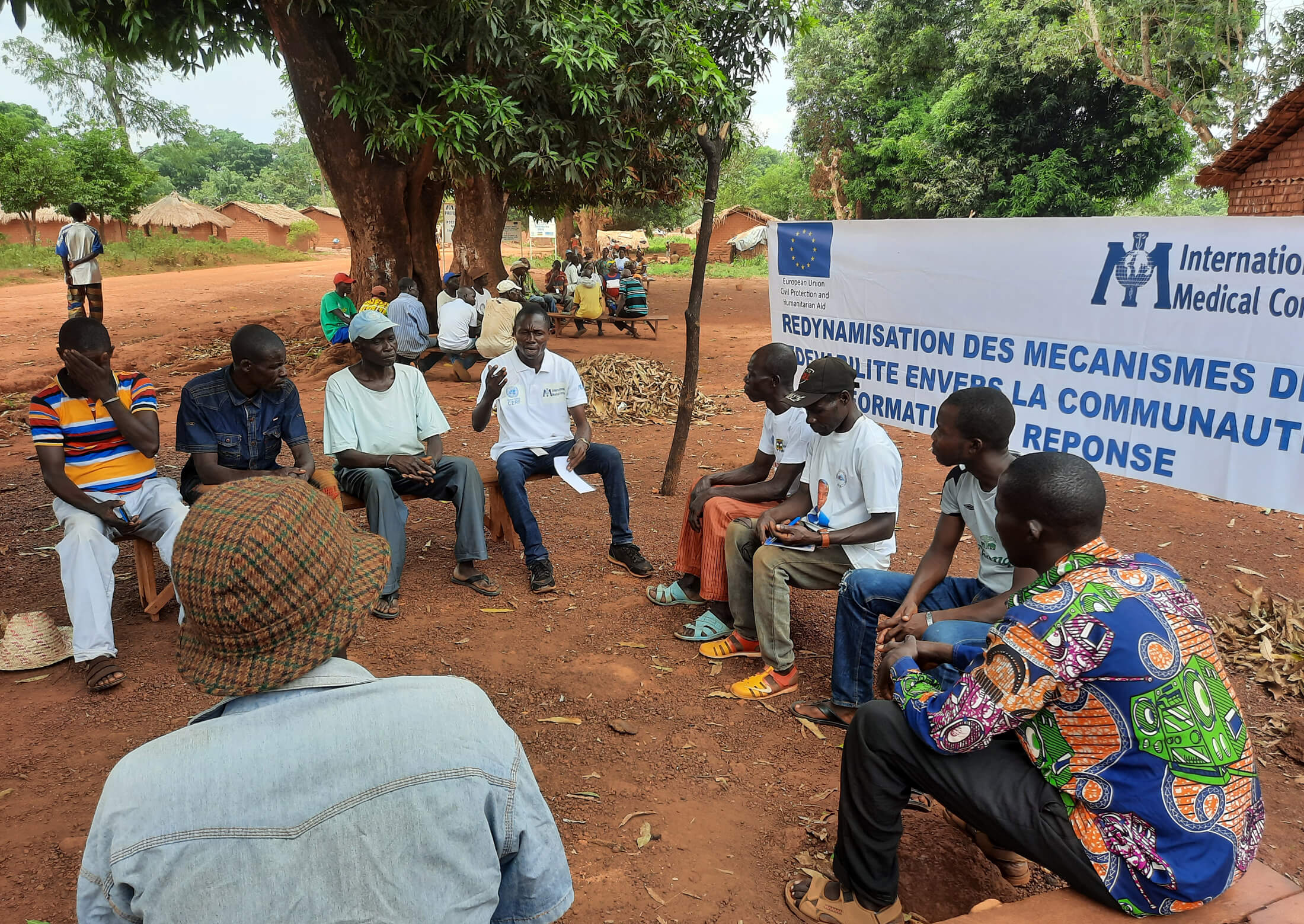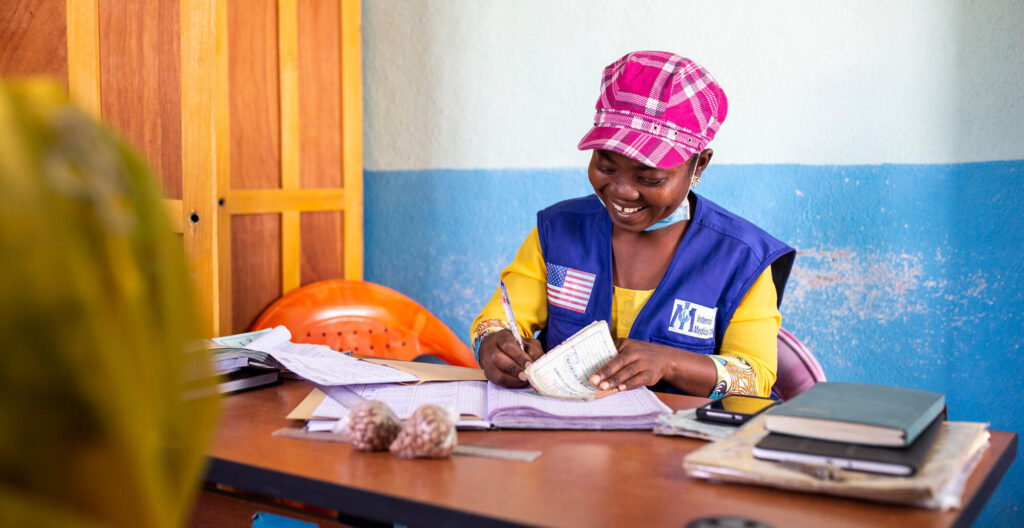Part of being a humanitarian organisation means putting people at the centre of our work. To ensure that we are effectively helping the people we serve, International Medical Corps has community-based feedback and response mechanisms (CBFRM) in place in every country where we operate. CBFRM offer communities safe, accessible and preferred communication channels where they can tell us how they feel about our services, provide suggestions, make a complaint or report instances of misconduct. Each country office has developed its own local, contextualised standard operating procedures for CBFRM, to ensure that the ways that people can report are in line with the specific needs and preferences in that setting.
“As a humanitarian organisation, we affect a lot of people,” says Michael Gall, Coordinator, Accountability to Affected Populations. “We understand that humanitarian contexts are not static environments, and we don’t want to impose our actions and decisions about the assistance we provide on the people we help. Community members know their own priorities, so if there are unmet needs, they should be able to contact us and let us know how we can improve the services we’re providing. If there are problems, they can bring them to our attention—and we have a responsibility to improve our programming.”
How We Gather Feedback
The approach we take to gathering feedback varies depending on the country, its culture and security situation, the remoteness of its field sites and many other factors. In some places, people may be afraid to raise complaints to people in positions of authority, while other cultures strongly believe in speaking one’s mind. In some countries, women have less leeway to voice their opinions. Low literacy rates can also be a consideration.
In other words, determining how best to collect feedback requires us to consult with communities to identify barriers and preferences.

“There’s no one-size-fits-all solution, so the consultation process is really important,” says Michael. “We want to find a mix of creative solutions based on the preferences of the community, so that everyone can easily and safely provide feedback.”
Some locations use suggestion boxes. In countries with good mobile service, we may utilise SMS texting, or apps like Telegram or WhatsApp, for CBFRM. However, research suggests that, regardless of their culture, people generally like to deliver feedback to a person, either face to face or through a hotline. Some country offices have established community-based committees, where trusted members of the community receive feedback on behalf of International Medical Corps. Other programmes set up help desks in the clinics where we work, or offer hotlines that beneficiaries can call. And all of our country programmes regularly evaluate their CBFRM channels to determine whether they are working well or if the process should be strengthened.
Once it is gathered, staff members log feedback in a database, assigning it to one of seven categories to help gauge the level of necessary follow-up action to be taken: Category 0 includes notes of gratitude, and Categories 1 and 2 are requests for information and assistance, respectively. Categories 3 and 4 include minor and major programmatic complaints, which are managed within the country office, while Categories 5 and 6 include sensitive complaints, which must be referred to the Ethics and Compliance department.
Michael says that the vast majority of feedback we get across all of our missions is notes of gratitude. For example, 90% of the 19,500 pieces of feedback we received in Ukraine last year fell into Category 0.
“It’s really important for us to look at this positive feedback,” Michael says. “It validates the quality of programming and the aspects of our work that the community most appreciates. There is still sometimes a tendency to refer to CBFRM as a complaint mechanism, which implies a negative stigma. It’s not about policing the actions of our staff or only looking for problems; rather, it’s important that we see CBFRM as a means of dialog and a way of building trust between our organisation and the people we seek to assist, demonstrating that we’re listening, adapting and responding to the changing needs of people.”

Ukraine’s Manager of Accountability to Affected Populations, Tetiana Korinna, sees benefits for the other side, too: for people who receive our services, the simple act of providing positive feedback can be empowering. “It is very useful for the people we serve to share their gratitude, which can help them feel like they aren’t merely victims or consumers,” she says. “I find it a very good sign that they are sharing their gratitude with us.”
CBFRM focal points attempt to respond to and resolve all feedback within 30 days of receipt, and respond whenever possible. Complaints always require a response, whereas positive feedback may or may not. When community members leave their names with their feedback, focal points can follow up individually, but when feedback is anonymous, our teams respond indirectly to the community through routine community meetings or information boards. CBFRM focal points may refer feedback to specific project teams, which are best placed to act on requests or complaints. If people aren’t satisfied with our response to their feedback, they can appeal our decision, and an independent group will review the feedback a second time to decide how to proceed.
It’s not enough to simply act on the feedback that we receive, Michael explains.
“If we don’t go back and close the communication loop to the community, it may seem like International Medical Corps didn’t do anything, so we have to explain our actions and decisions,” he says.

How Feedback Helps Us
Gathering feedback helps International Medical Corps teams make changes that benefit the people we serve. In Ukraine, for instance, the CBFRM has helped connect us with additional opportunities to help communities.
“An older woman called us wondering why she couldn’t visit with a cardiologist at our mobile medical units,” Tetiana explains. “At the time, I was answering our hotline, and I decided to ask her questions about her region and what was happening there. She shared that in her particular area, the local ambulance had been ruined by missiles and that her community of around 4,000 people didn’t have access to any medical services.”
Tetiana forwarded this information to the Ukraine Health team, which conducted an assessment in the woman’s village and the surrounding areas. The team found one small ambulance, equipped it with an ultrasound and medications, and began providing other assistance to that location.
“Thanks to one woman who made a phone call with a completely different purpose, International Medical Corps was able to conduct an assessment and provide humanitarian assistance to a much larger group of people,” Tetiana says.
The CBFRM can also help us to make quick decisions about our programmes in real time. In one instance, our Lebanon team was overseeing the handout of diapers and other items at a primary healthcare center. During the event, the CBFRM hotline started to receive calls from recipients, complaining about overcrowding and management of the queue of people waiting.
“After the third call, we saw there was a trend,” says Miriam Assaad, Lebanon’s Manager of Accountability and Effectiveness Programming. “One phone call would be a minor complaint, but multiple calls meant that we upgraded it to Category 4—major dissatisfaction with programme activities—and escalated it to involve the area manager and programme manager.” The team took corrective measures on the spot, reassessing the distribution and helping the centre reorganise.
The end goal of the CBFRM is continual improvement. It is a tool that helps us improve the quality of our work and catch problems before they snowball and become worse.
“We are constantly working with every country team to try to improve, so we should be scrutinising our own work,” Michael says. “It’s important to sometimes pat ourselves on the back and recognise the hard work that we’re doing. But it’s also important to understand that despite our best intentions, sometimes things go wrong. That’s only human. The CBFRM provides a tool by which we can acknowledge when there are problems and take a systematic approach to fixing them.”
